Interactive Learning Resource Topic: The Circle of Courage
Hi Noah, Ayden and Raquel,
First thing first, being an international student, I greatly appreciate your choice of topic as it is highly informative and piqued my curiosity about the indigenous way of life. I enrolled in this resource to seize the opportunity to educate myself further on the subject.
Identify components of the Interactive Learning Resource that might be missing (e.g., appropriate outcomes, alignment, interactivity, inclusivity, technology use and rationale, presentation, grammar, spelling, citations, etc.).
According to the blueprint:
To enhance the effectiveness of your resource, you could look into addressing the following loopholes:
->Explain why you selected this topic.
->Identify one or two common misconceptions about the subject.
->Clearly state the intended audience for your presentation.
->Justify the use of technology choice (Google Slides) to host your project.
->Outline the assessment approach for evaluating learning outcomes.
->Elaborate on your learning theory philosophy and its principles.
Provide a summary of The Interactive Learning Resource’s strengths and weaknesses. Draw out specific examples from your peers’ work to justify your feedback.
Strengths:
- I really liked how you have structured your learning design and throughout the learning resource, one finds succinct definitions that are accompanied by visual representations.
- The way you incorporated Jamboard was something I really admire about your learning resource. There is nothing that works as well as collaboration in class, so providing your students with that sacred space is a step in right direction.
- The open-ended essential questions that you used are comprehensive, reflective and thought-provoking. They are bound to lead to engaging discourse if used in a class discussion format.
- Each module includes an interactivity task and that is a great way for the students check their learning or just place it in a relevant context.
Weaknesses:
Apart from the previously mentioned loopholes in the initial section, I did have reservations about using Google Slides as the platform for hosting your resource. Considering the rapid advancements in technology, exploring alternative tools might offer greater flexibility and functionality, enhancing the overall learning experience for the target audience.
Provide general, specific, and practical recommendations to your peers on how to improve their Interactive Learning Resource.
-> Explore diverse assessment techniques, including peer assessments, quizzes, presentations, and project-based evaluations, to gain a more comprehensive understanding of students’ performance beyond self-assessments.
->Provide detailed descriptions for each interactive activity, including step-by-step instructions, required resources, and expected learning outcomes. This ensures effective implementation and alignment with the learning objectives.
->Create a comprehensive assessment plan that outlines evaluation methods and criteria for each learning objective, combining formative and summative assessments to monitor students’ progress throughout the learning process.
->To foster an inclusive learning environment, you could tailor some activities to cater to various learning styles, such as visual, auditory, or kinesthetic learners, that accommodates and caters to all students’ preferences.
-> Encourage continuous feedback from both students and educators to identify areas of improvement in the resource.
-> Establish real-world relevance by connecting activities and assessments to practical applications whenever possible, perhaps that would help students perceive the significance of the covered topics and developing a deeper understanding.
By filling the above mentioned loopholes, your resource can become more robust, engaging, and effective in bridging the gap and facilitating meaningful learning experiences for all students.
Thank you for creating it. All in all, it was a great learning experience for me and I wish you best for the final assignment.
🙂
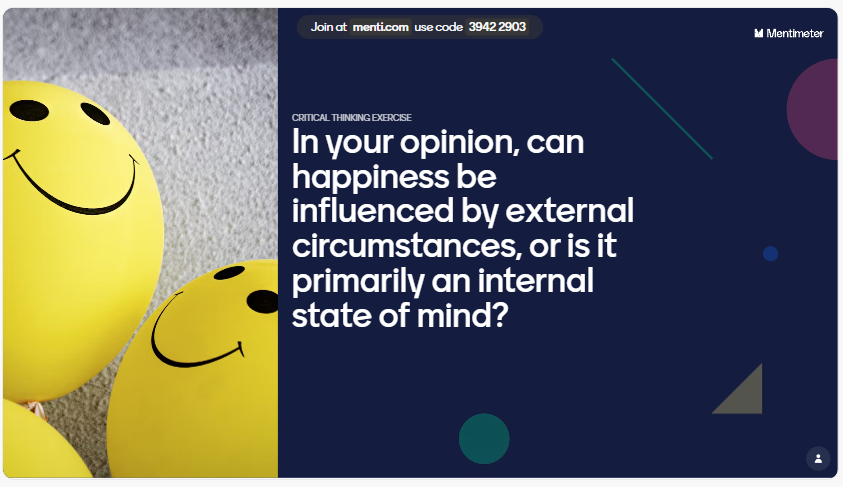
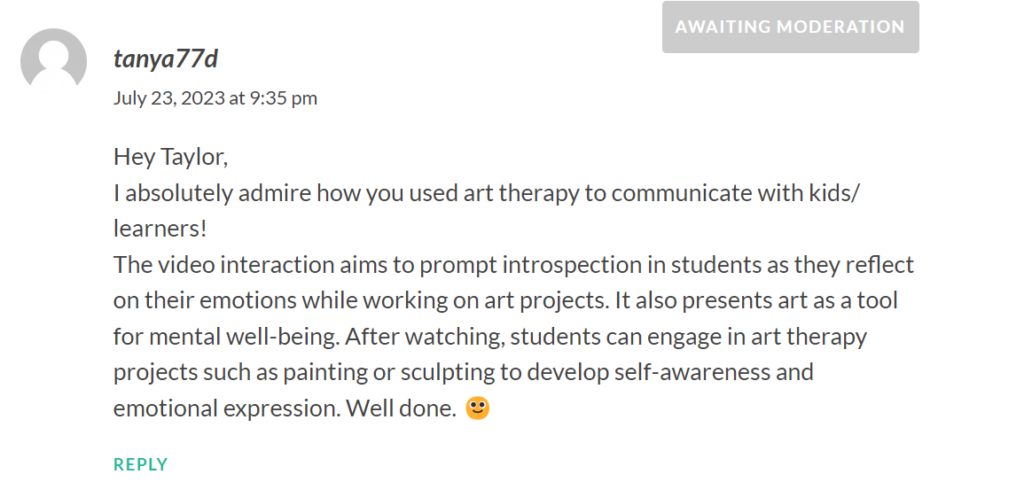
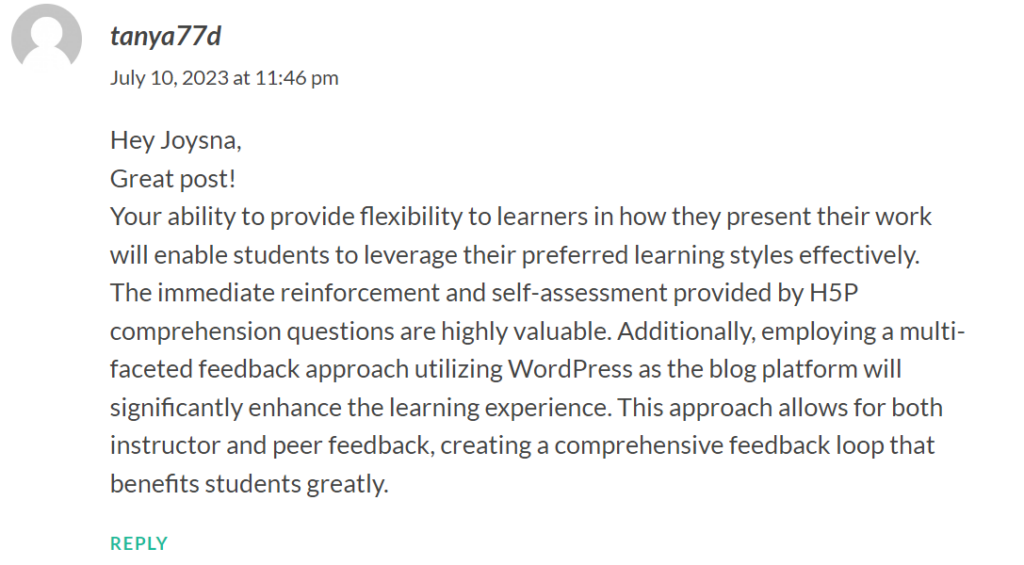
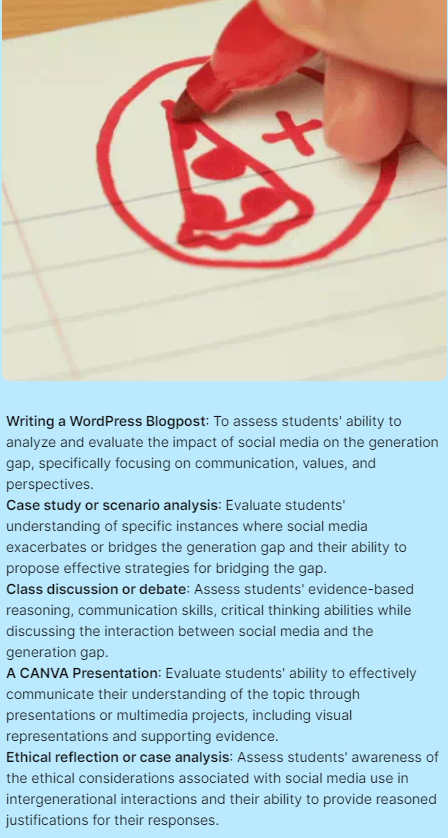
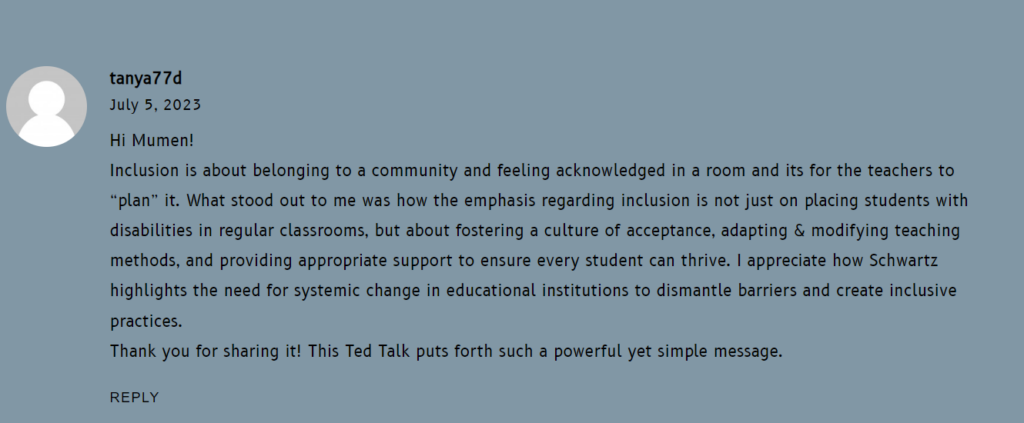
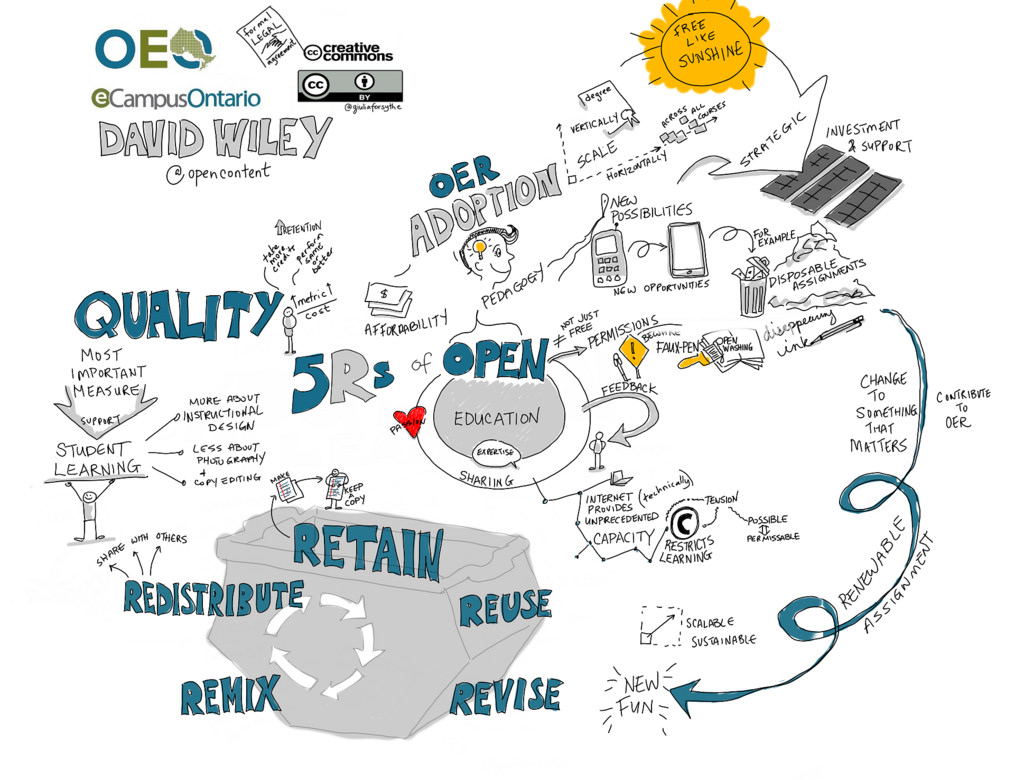
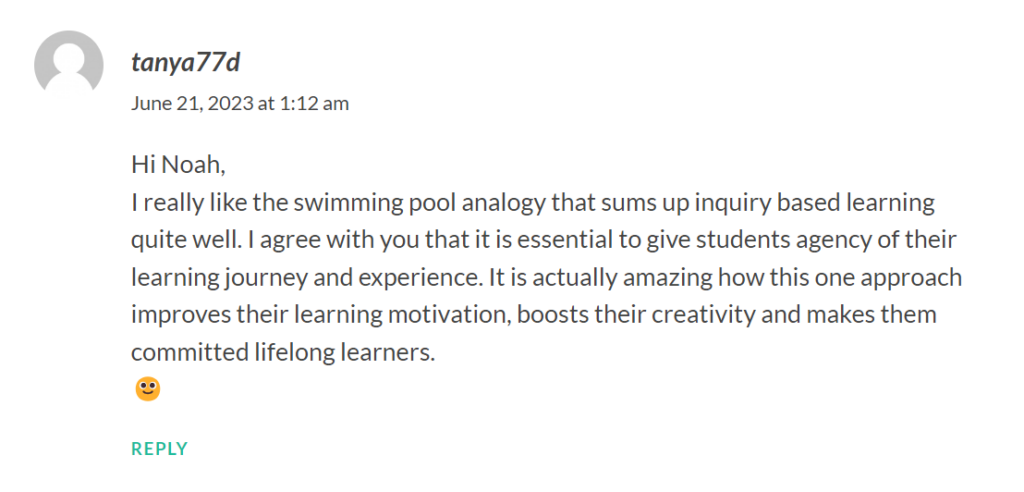
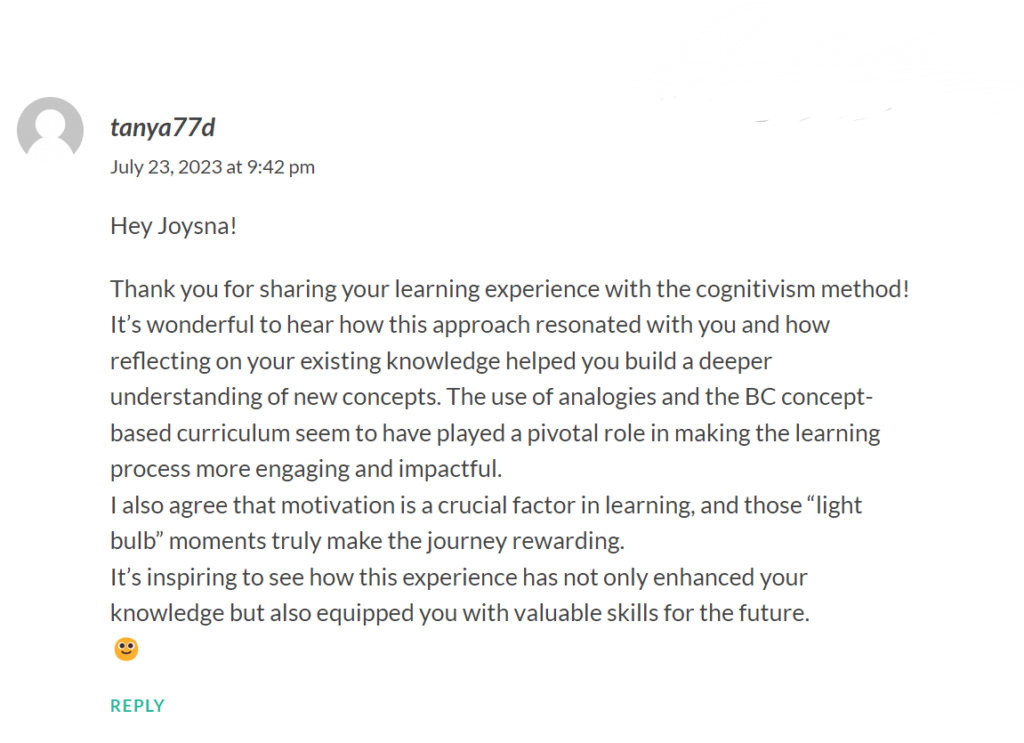
Hello Tanya, Thank you for sharing your experience about how you had to modify your plan, changing in from a…
Hello Tanya, Thank you for sharing your different learning experiences. I can relate to the sentence you wrote whereby the…
Hi Tanya! Thanks for sharing that fantastic video. It was really deep, and I enjoyed watching it. What I loved…
Hey Noah, Thank you for your comment! I often times rely on digital pedagogy in my ESL classroom. I can…
Hi Tanya, I love the activities that you provided to go along with your video, very creative! I think that…